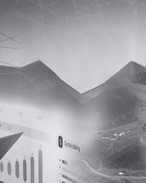A new underground deposit could be in production as early as the second half of next year, while Newcrest is pushing ahead with a feasibility study for a $400 million-plus super pit that could be on stream in 2004.
If Newcrest can line up all its ducks - which may be a big ask if gold prices soften any further - Telfer could eventually bounce back as a 600,000oz -plus producer.
In its June quarterly, Newcrest announced that high production costs had forced the closure of Telfer after 13 years of operations, resulting in the loss of 230 jobs and a writedown of approximately $80 million.
After the remaining ore is treated by the end of September, all processing facilities will be placed on care and maintenance.
But the decision does not affect a $30 million project now under way to build a tunnel down to the high grade I-Series reefs at Telfer, roughly 1km below the surface.
"That decline should get down there in March/April of next year," said Pieter Greeff, Newcrest's executive general manager of WA operations.
"Then we will do exploration, take bulk samples and so on to test the viability of the I-30 high-grade reef and the bulk mining potential around it."
Once Newcrest gets down there, it shouldn’t be too long before at least part of the surface treatment plant is brought out of mothballs.
"If we get there in April, you could see ore production in the second half of calendar 2001," Greef said.
The worst case scenario is for Newcrest to develop a high grade, small tonnage operation that would produce 150-200,000oz per annum over a five-year life.
But the real prize is a bulk operation that would quadruple throughput and extend the underground mine life to 10-15 years.
"We know that we've got a high grade reef, which averages around 2m width, that we can mine on its own," Greef said.
"But there is a hell of a lot mineralisation around that reef. You might be able to bulk out 100 vertical metres - but instead of 15gpt it might be 5gpt. Instead of selectively mining small stopes, you have large, bulk stopes. That reduces your mining costs and you have economies of scale. That is what we are hoping for."
So what are the chances of that happening? "It looks fairly promising, but we are not at a stage where we can draw stope outlines and mine designs around it to see if we can make money on it," Greeff said.
"Because it is just too expensive drilling it from surface. We need to get right into it and drill it from within."
If the bulk operation does shape up, Newcrest will need to build a decent-sized shaft.
"You are not going to truck 2 million tonnes of ore per year from 1000m below surface - it would cost you an arm and a leg," Greeff said.
If Newcrest can launch the I-Series reef next year, it will provide cash flow until the proposed Sulphide Expansion Project (SEP) super pit cranks up a couple of years later.
"We've finished the prefeasibility study [on the SEP] and are going to the board over the next couple of months to get the money approved for the full feasibility study," Greeff said.
He is hoping for a go-ahead by year-end for the $30-40 million study, which is likely to take around two years.
With an envisaged annual throughput of up to 20 million tonnes, the SEP will require some large-scale milling and mining gear.
"Part of the feasibility study is to firm up what circuit we are going to use," he said.
According to Greeff, Newcrest's optimism about the SEP made the recent closure decision more palatable.
"We'll get the ounces we're leaving behind when we mine SEP," Greeff said.
"One of the reasons why we made the [closure] decision is because SEP is looking fairly good. So if you are going to mine it in the future with bigger equipment and economies of scale, why mine it now when it will cost you more? Those ounces are not lost."























